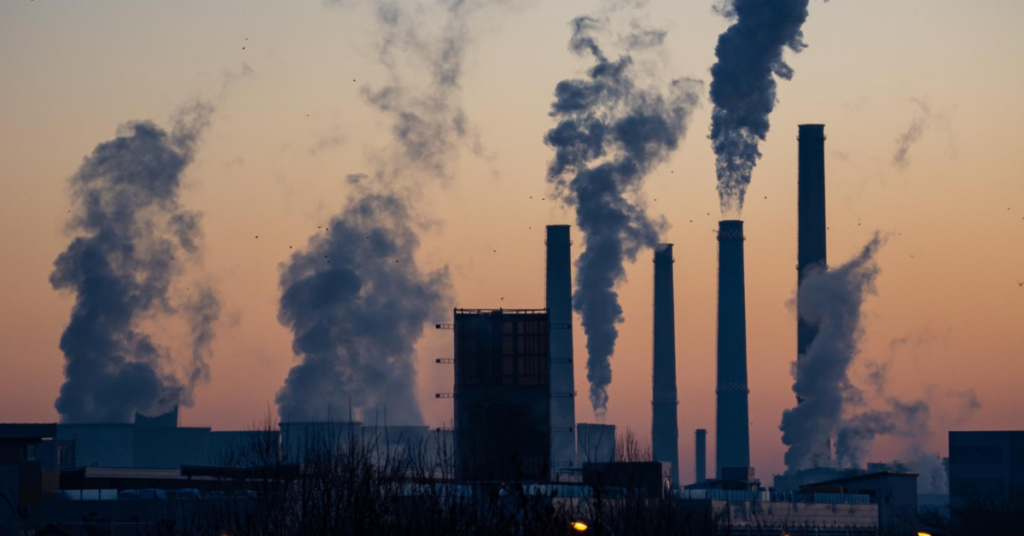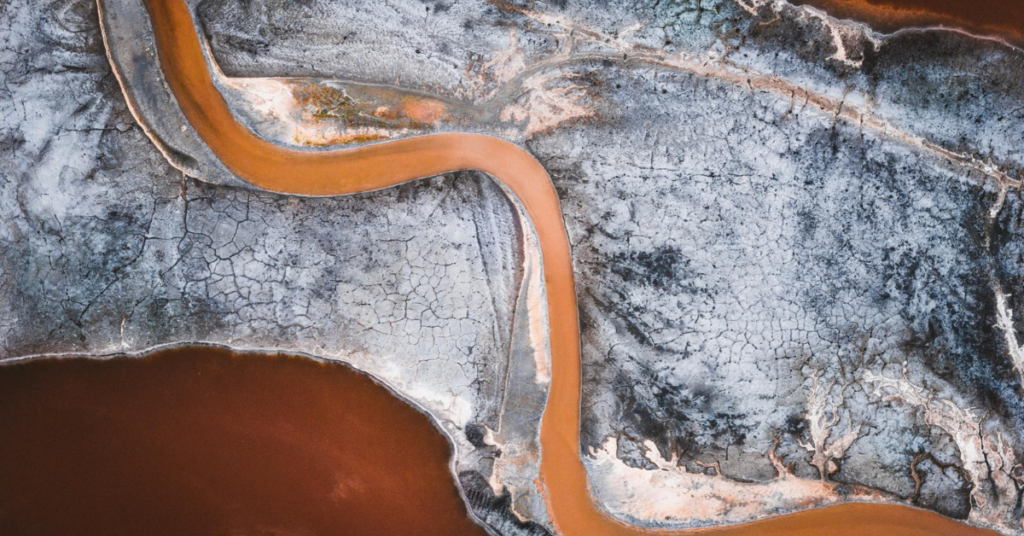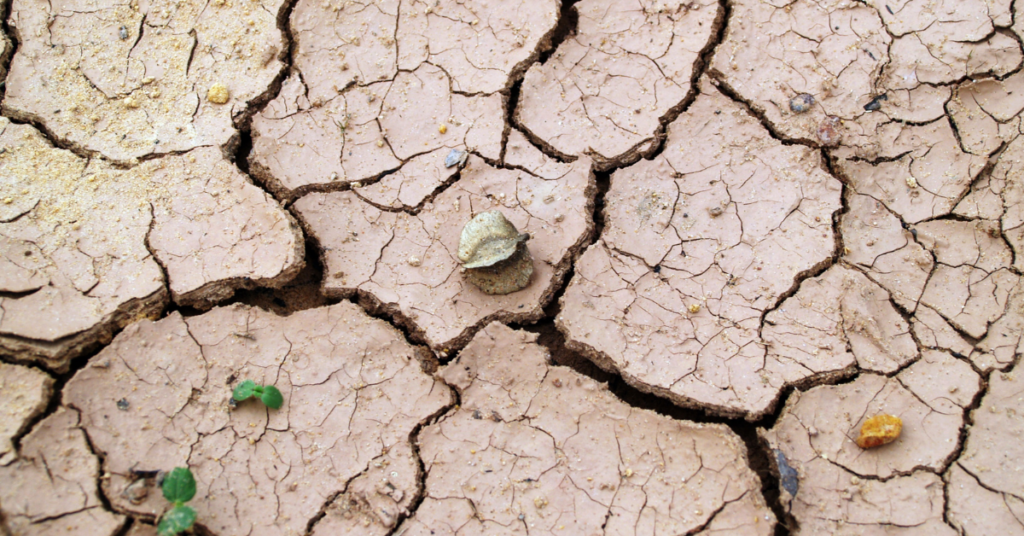Like many of their fellow B Corps, Mud Environmental exists to contribute positively to people, local communities and the environment, and they have been doing so since 2014.
Voted on the Best For The World in Environment list every year since 2017, their expert team of auditors, scientists and engineers measure what matters and then design and implement remediation solutions to contamination problems that improve our natural world. Clear as mud? Well, funny you should mention that slimy, sticky substance that is this B Corps’ namesake.
To help us unpack why solving contamination issues must be a critical part of our environmental stewardship efforts, we sat down with Director of Mud Environmental, Adrian Webber, who shares cautionary lessons and messages of hope for the future of our planet.

Photo: Canva
Getting crystal clear on ‘contamination’
Contamination occurs due to physical and chemical interactions between soil, water and air. It is something we have lived with since industrial activity and colonisation began, arguably due to the dismissal of Indigenous knowledge of land and water management as well as the increasing use of man-made agricultural, industrial and domestic chemicals in everyday practices.
From washing clothes, farming fruit and vegetables, and even mineral mining, land and groundwater contamination is present in cities, rural and regional areas all over the world. It can be both a legacy of unsafe waste disposal methods, or due to the continuing use of hazardous and harmful contaminants that travel through soil, groundwater and air into our food chains, impacting human health and the environment in a variety of ways.

Photo by Ella Ivanescu on Unsplash
Why this work is so important
When sites like hospitals and childcare facilities or even homes are built, attention must be paid to the quality of the surrounding land and environment, making work of B Corps like Mud Environmental critically important.
They provide site contamination audits for property redevelopment, disposal or reuse of waste materials and detailed site investigations on various materials (soil, water, air, asbestos), among other things. Working across a range of industries including property development, urban planning and infrastructure, health, and local and state government – they repair the local environment, one contaminated site at a time, facilitating safe property development and urban planning to avoid further contamination.

Photo by Ivan Bandura on Unsplash
Environmental contamination problems in Australia and Aotearoa
As recently as the 1980s, chemicals used by industry were simply tipped down drains and poured onto soil to evaporate. There was a lack of awareness about the long term impacts this could have, and laws were not in place to prevent it from happening.
Once awareness increased and clean ups began in the 1990s, there was an expectation that we would run out of contaminated sites to clean up. However, as Mud Environmental laments: humanity has unfortunately continued to harm the natural world and we still have so much to remedy.
The Environment Protection Authority (EPA) estimates that there are still 160,000 contaminated sites in Australia, with the Ministry for the Environment estimating that there are a further 60,000 contaminated sites in Aotearoa New Zealand. And according to the EPA, responsibility for site contamination is assigned according to a ‘polluter pays’ principle – meaning that the original polluter is liable for any clean-up and associated costs caused on and off the source site, regardless of when it was caused.
This isn’t always easy, with site contamination often historical in nature, the original polluter may no longer exist or be able to be identified. In these cases liability can pass to the current site owner.
A word of warning
For Mud Environmental’s Founder and Director Adrian Webber, anthropogenic products and/or chemicals such as asbestos, trichloroethene (a carcinogenic solvent), chlorofluorocarbon (which destroys the Earth’s ozone layer), and polyfluoroalkyl substances (a pervasive manufactured chemical) are cautionary tales.
“History has shown that we should be more cautious with new technologies. Today’s wonder product could be tomorrow’s contamination legacy.”
Soil, water and air quality is generally regulated under state legislation and associated guidelines, policies, and standards. Though to aid transparency and improve accessibility and information sharing, Mud Environmental has curated a repository of regulatory links, guidelines and other helpful resources to help keep people informed.

Photo by icon0.com on Pexels
Protecting and regenerating the environment
Mud Environmental, like other B Corps in this space including Senversa and Land & Water Consulting, do their best to mitigate harm to humans and modified ecosystems by removing toxic elements from the environment.
Whilst we should all strive to cause no unnecessary harm, the reality is that sustaining human life on this planet will impact the Earth. That’s why Mud Environmental exists: to ensure that contaminated land is safe and improved, where possible, so there are no long-term harmful legacy for local communities and ecosystems. But they want to go one step further.
For Mud, working hard to regenerate the environment is paramount to humanity’s, and the Earth’s, survival. Regeneration ensures that natural ecosystems are balanced by stimulating biodiversity and restoring what we have lost.
Involved in projects like the Remediation of CCA Ash after the 2019 Cudlee Creek Bushfire for which they won the Best Remedial Project Award, Mud Environmental continues to try and streamline the process of making contaminated land safe and prosperous for the community and the environment symbiotically. After all, we are all interdependent.
What it’s like to be Best for the World
For Mud Environmental, they are proud to be a B Corp and on the Best for the World list for Environment. Apart from the toxic reduction inherent in the work they do, Webber sees the small tangible improvements that can be made by all businesses in resource use, carbon and waste as very satisfying. As a direct result of their B Corp certification, he shares that: we offset all carbon emissions, generate and use our own energy through solar battery storage, we use little resources and produce little waste.
“Becoming a B Corp in the first place is not easy; you must examine every aspect of your business, which forces you to define and prove your commitment to purpose and values. But staying B Corp certified is even harder in some ways, as you must find ways of continuously improving and remaining committed to the cause.”
We remind ourselves that: nothing worthwhile is easy, and the B Corp movement is definitely worthwhile.
What’s exciting about the future of environmental stewardship
In the coming years, Mud Environmental will be increasing their pro-bono environmental services through a new venture called ‘The Environmental Collective’ (TEC). TEC represents a group of highly trained and experienced environmental professionals ready to roll up their sleeves and assist NFPs, charities and B Corps with contamination issues.
They are also excited about the science emerging around carbon farming (sequestration of carbon in soil and vegetation), which involves the implementation of practices that increase the rate at which carbon dioxide is removed from the surrounding atmosphere.
Once removed, it is stored in plant or organic matter, thus mitigating climate change and fortifying agricultural resistance. There are also some new developments to help businesses more accurately track their emissions to make their annual offsets more visible and accountable – so it’s a case of ‘watch this space’.

Photo: Canva
A message from Mud Environmental for the B Corp community this Earth Month
To quote Joan Baez: ‘Action is the antidote to despair’. It is important to stay positive, know that you are surrounded by like-minded people in this community and keep on improving what you can control.
Thank you to Mud Environmental for sharing their knowledge and expertise with us for Earth Month 2022.
If you would like to learn more about other B Corps paving the forward with climate-friendly, regenerative products and practices, visit the B Corp Directory. Or, if you’re after some inspiration on how you can salute Earth Month this year, we have nine nifty alternatives over on the blog.

